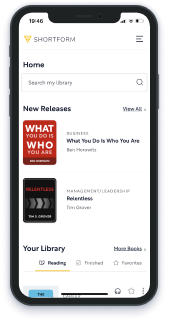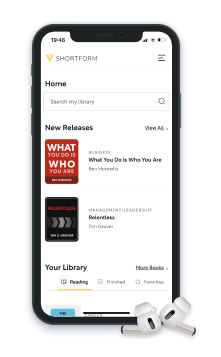

This article gives you a glimpse of what you can learn with Shortform. Shortform has the world’s best guides to 1000+ nonfiction books, plus other resources to help you accelerate your learning.
Want to learn faster and get smarter? Sign up for a free trial here .
Do you struggle with alcoholism, workaholism, or other addictions? What bad habits would you like to break?
Addiction is a controlling force; it makes you a slave. You might engage in behaviors that require professional intervention before you can shake them. But, regardless of what you’re addicted to and to what degree it controls your life, introspection is an excellent place to start.
Continue reading for nine exercises that contain questions about addiction that will help you take steps in a positive direction.
Questions About Addiction
Whether you’re hooked on illegal drugs or spend too much time on social media, the following questions about addiction will help you think through your behaviors, the reasons behind them, and ways you can break the habits that hold you back.
These exercises, which you can do alone or with a group, are based on concepts in the following books:
- Digital Minimalism by Cal Newport
- The Distracted Mind by Adam Gazzaley and Larry Rosen
- Dopamine Nation by Anna Lembke
- Indistractable by Nir Eyal
- This Naked Mind by Annie Grace
Exercise 1: Consider the Consequences of Your Addictions
These questions about addiction will help you reflect on the behaviors that take your time away from goal-supporting and productive actions.
- Think about your day-to-day activities. What addictions or bad habits are part of them? (For example, you might check social media or binge-watch Netflix.)
- What are the important things these addictions or habits are keeping you from? (For example, social media is distracting you from studying, and Netflix is distracting you from getting a good night’s sleep.)
- What do you believe you could accomplish if you kicked these addictions or habits? (For example, you might experience less procrastination and stress in school, more time focusing on your family without thinking about work, or less dependence on your smartphone.)
Exercise 2: Reflect on the Feelings Driving Your Addiction
One of the keys to stopping and preventing addiction is paying attention to the internal triggers that usually drive you to undesirable behaviors.
- Describe the situations where you find that you’re most easily driven to the addictive behavior. Pay attention to both the activity and details such as the time of day or who’s usually with you. (For example, you’re with a particular friend on weekends when you drink, or you’re alone at night when you binge on junk food.)
- What are the feelings—physical and mental—that usually precede giving in to the addictive behavior? (For example, you experience restlessness, stress, or boredom.)
- How does giving in to the addictive behavior usually make you feel? (For example, you feel relief or more anxiety.)
Exercise 3: Reframe Your Situation
Sometimes, addictions are attempts to escape from reality. Adding challenges to everyday activities makes them engaging and interesting—reducing your need for an escape.
- Describe an activity you do that often makes you feel bored, restless, or otherwise in need of escape. (For example, practicing an instrument or writing sales pitches.)
- How can you dive deeper into this activity? In other words, break it down into smaller parts and examine them closely. (For example, you research each of your instrument’s chords and which chord combinations work best, or you go through old, accepted pitches to identify best practices.)
- How can you create a challenge within this activity? Keep in mind that engaging challenges usually entail limits. (For example, you challenge yourself to learn one new song per week or make a goal of writing three pitches in two hours.)
Exercise 4: Reduce Your External Triggers
These questions about addiction are about external triggers. Left unchecked, they can easily pull you into addictive behavior.
- What external trigger(s) do you find most distracting? (For example, getting a notification on your phone tempts you to get on social media, recommendations at the bottom of articles keep you clicking and scrolling, or seeing bottles of beer in the fridge prompts you to reach for one.)
- Why do you think this particular trigger is so powerful? (For example, your audio notifications grab your attention even when your phone is put away, recommended articles give you something easy and interesting to browse, or you enjoy the taste of beer.)
- Describe your plan for diminishing this trigger’s ability to tempt you. (For example, turn off sound notifications, save recommended articles to an app so you can read them later, put beer out of sight, or stop buying beer in the first place.)
Exercise 5: Create an Effort Pact
In Indistractable, Nir Eyal writes recommends that you make an effort pact. This is a precommitment that makes it more difficult to do something undesirable. This extra bit of difficulty gives you a moment to pause and ask yourself if the behavior is really what you want to do.

Want to fast-track your learning? With Shortform, you’ll gain insights you won't find anywhere else .
Here's what you’ll get when you sign up for Shortform :
- Complicated ideas explained in simple and concise ways
- Smart analysis that connects what you’re reading to other key concepts
- Writing with zero fluff because we know how important your time is






